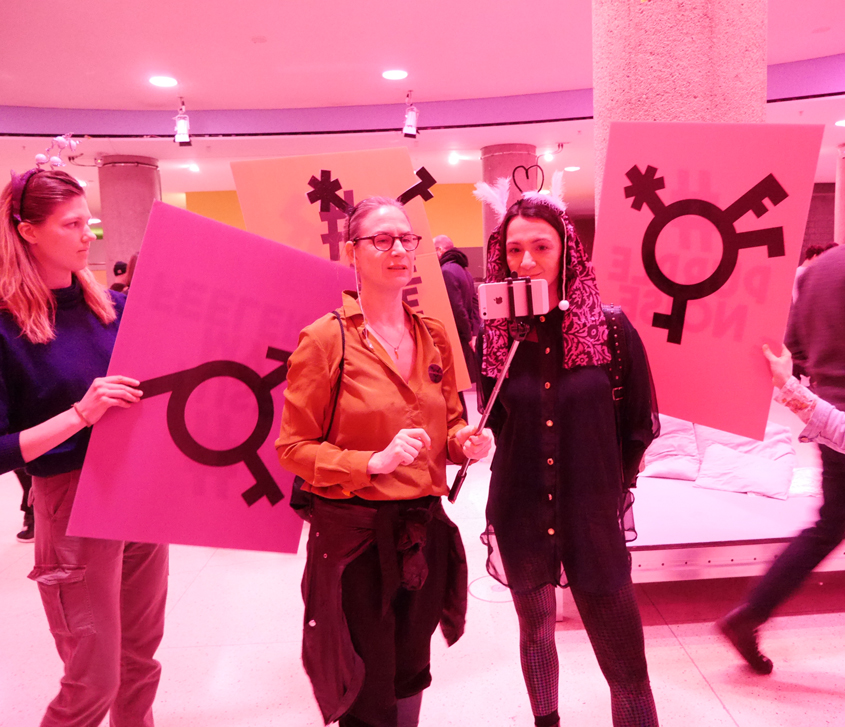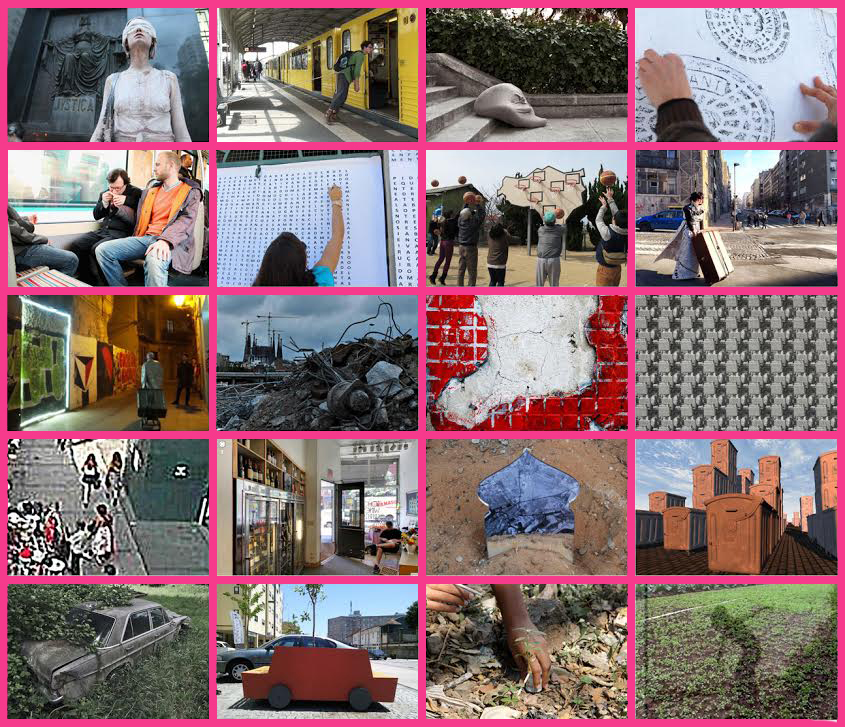
#purplenoise
[Since 2018 I have been a member of the technofeminist research group #purplenoise]
#purplenoise is an interdisciplinary technofeminist research group that uses real-life events to explore social media as the arena for protest and political activation. Inspired by Christina Grammatikopoulou’s concept of expanded space, #purplenoise stages online-offline campaigns, communicates through various social media channels to explore its feedback loops. The research methodology puts “noisification” at the center of its strategy. In this context, “noise” is understood as “a manipulative communication strategy which, by deliberate disturbance or confusion on communication platforms, attempts either to obscure or falsify a message or information for its recipients, or to deliberately launch false information.” (Grammatikopoulou 2019)
Strategies such as intervention, infiltration, manipulation, propaganda, fake news, manifestos and poetry are fueled by love as well as anger and are implemented with a strong visual appearance. At the heart of #purplenoise there is technofeminist propaganda: the desire to fuck over social media, to bring down platform capitalism, to reconquer public space, to escape the social control exercised by monopolies, to refine political manipulation, to use affect in order to build the common, to turn power into care, to produce more just realities, to create new narratives about the future.
For its campaigns #purplenoise uses hashtags (specific for each action, but also some general ones like #imakenoise and #purplenoise), a meme that appears in many forms (the feelers), our freely variable gender symbols, and a fixed color code (variations of purple/pink/magenta, e.g. also through colored light). The feelers meme goes back to Donna Haraway’s Camille Stories. In it, she describes a future scenario in which humans do not experience gender specification before puberty and, moreover, can supplement their human physical boundaries by freely selecting features from other creatures. #purplenoise chose the feelers as a playful symbol for the necessary expansion of the human sensorium.
The group was initiated in 2018 by Cornelia Sollfrank. Janine Sack has developed the visual appearance. For each project, different collaborators come together who are listed individually for each project.
The current group consists of: Cornelia Sollfrank, Janine Sack, Christina Grammatikopoulou, Johanna Thompson, Andrea Kelemen, Andreea Carnu, Magdalena Götz
Former collaborators are: Isabel de Sena, Charlotte Bonjour, Marlene Halser

Interartive
[Since 2008 I have been a member of the editorial team of Interartive]
Interartive is an art journal edited by friends and colleagues: Christina Grammatikopoulou, Herman Bashiron Mendolicchio, Marisa Gomez, Lucila Vilela and Modesta di Paola. Having different backgrounds (artistic, theoretic and country of origin), our collaboration resulted in a transcultural, transdisciplinary and multilingual art platform, that provided access to a large cultural base of international and local artistic expressions.
Over the years it has become a meeting ground for over 600 artists and academic researchers, that collaborated with the journal.
From 2008 until 2018 we published 100 monthly issues and during the past four years publications have become more sporadic.
The publications cover a wide range of research topics and artistic practices, from academic studies to exhibition criticism, philosophical and literary topics, interviews with artists, curators, directors of cultural centres and theorists.
Every text is published in English or Spanish with occasional translations in the mother language of each writer (Catalan, French, Greek, Portuguese, Italian and German).
The heart of each issue is the Online Exhibition, which presents the work of an artist with a curatorial text by an art theorist, translated in five languages (English, Spanish, Portuguese, Italian and Greek).
Interartive often includes special issues dedicated to a topic relevant to contemporary art, such as monuments, urban space, originality and copy, copyright, etc. These issues are broader in scope, involving a call for proposals, a peer reviewing process and guest editors.
